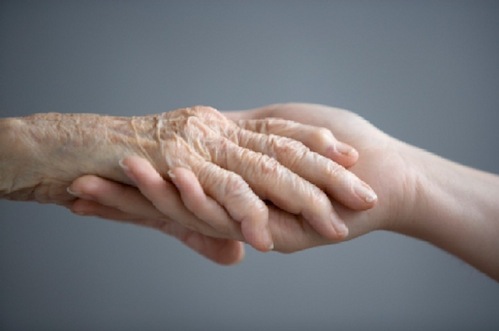 Although hot water and bubble baths may sound relaxing to many, for those with atopic dermatitis, this can have the opposite effect, causing dry, scaly, red patches to develop on the skin. Affecting nearly 28 million Americans, atopic dermatitis, also known as eczema, is frequently described as the “itch that rashes.”
Although hot water and bubble baths may sound relaxing to many, for those with atopic dermatitis, this can have the opposite effect, causing dry, scaly, red patches to develop on the skin. Affecting nearly 28 million Americans, atopic dermatitis, also known as eczema, is frequently described as the “itch that rashes.”
Since the condition makes it harder for the skin to keep out harmful bacteria, viruses and other germs, people with eczema often have sensitive skin prone to inflammation and infections.
Although there is no cure for eczema, dermatologists from the American Academy of Dermatology say those with moderate to severe eczema can improve their symptoms and reduce their risk of skin infections using bleach bath therapy.
Bleach is antibacterial, and studies have shown that a diluted bleach bath may reduce eczema symptoms by reducing bacteria and inflammation on the skin,” says board-certified dermatologist Ross Radusky, MD, FAAD, who maintains a private practice in New York. “However, it’s important to follow your dermatologist’s recommendations carefully in order for this treatment to be safe and effective.”
According to Dr. Radusk. A bleach bath may be helpful a few times a week. However, it shouldn’t be used daily, he says, as this can be too drying to the skin.
To prepare a bleach bath, Dr. Radusky recommends the following tips:
- Use regular strength (6 percent) bleach. Make sure it is plain bleach, and do not use splash-less or concentrated bleach, or bleach that has fragrance.
- Measure the amount of bleach before adding it to your bath water. Adding too much bleach can irritate your skin. However, adding too little may not be helpful. Use a half cup of bleach for a full bathtub of water, a quarter cup of bleach for a half-full tub of water, and 1 teaspoon of bleach per gallon of water for a baby or toddler bathtub.
- Pour the bleach into the running bath water while the tub is filling. Wait until your bath is fully drawn before entering the bathtub. Make sure you use lukewarm bathwater, since hot water can dry out the skin, causing your eczema to flare. Do not submerge your head in the water; only soak from the neck down.
- Never apply bleach directly to your eczema.
- Ask your dermatologist how long to soak in the tub. Most dermatologists recommend a five- to 10-minute soak. Afterwards, turn on the shower and gently rinse your skin with lukewarm water — no soap — before exiting the bathtub.
- Gently pat your skin dry after the bath. Use white towels if you are concerned about bleach stains.
- If your eczema requires medication, apply it immediately after the bath. Then apply your moisturizer.
“Keep in mind that bleach baths are one component of an overall treatment plan that includes medicine and a good skin care routine,” says Dr. Radusky. “To improve your eczema and prevent flare-ups, talk to a board-certified dermatologist to create a treatment plan that’s tailored to your needs.”
These tips are demonstrated in “Eczema: Bleach Bath Therapy,” a video posted to the AAD website and YouTube channel. This video is part of the AAD’s “Video of the Month” series, which offers tips people can use to properly care for their skin, hair and nails. A new video in the series posts to the AAD website and YouTube channel each month. VTN



